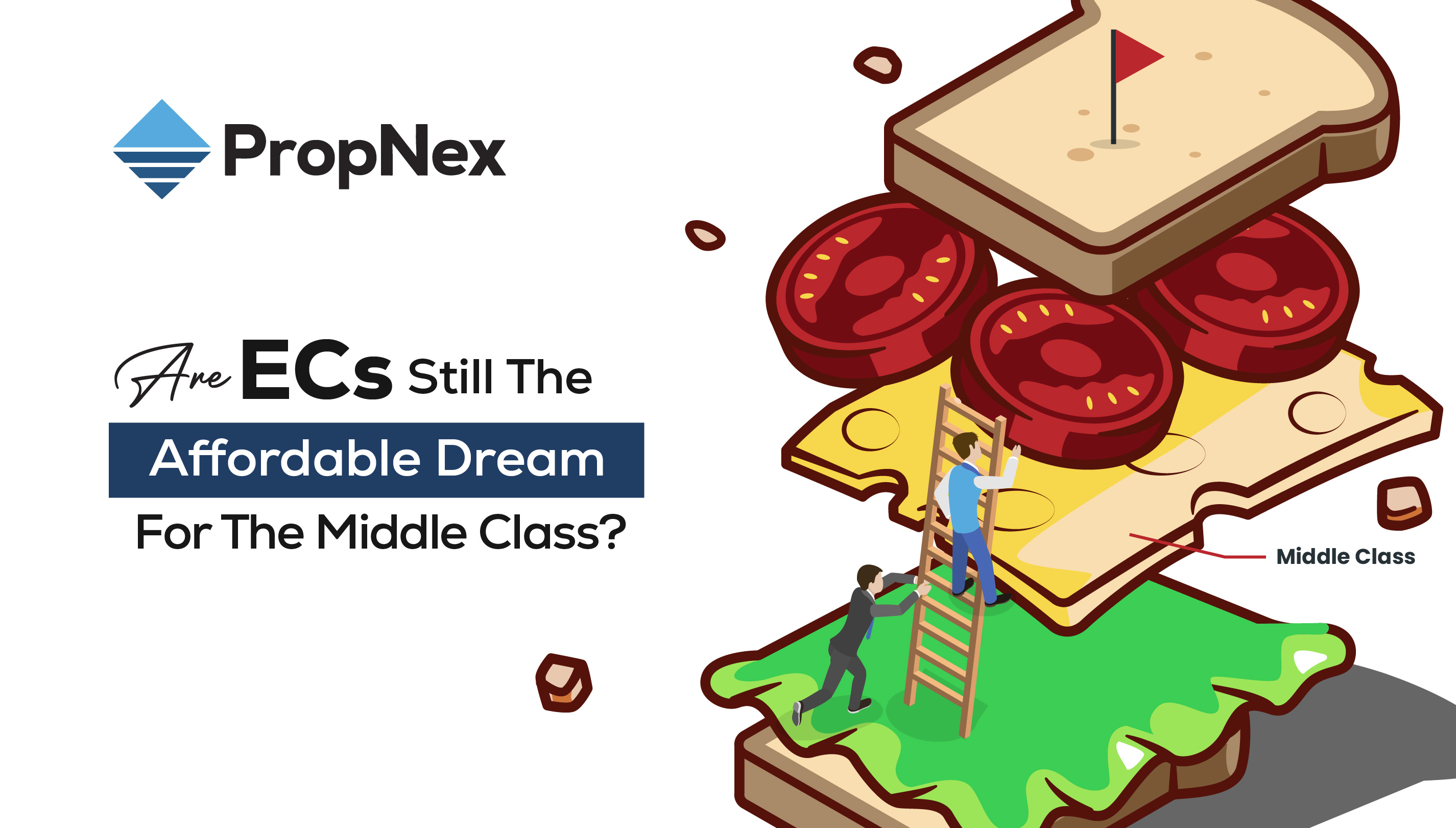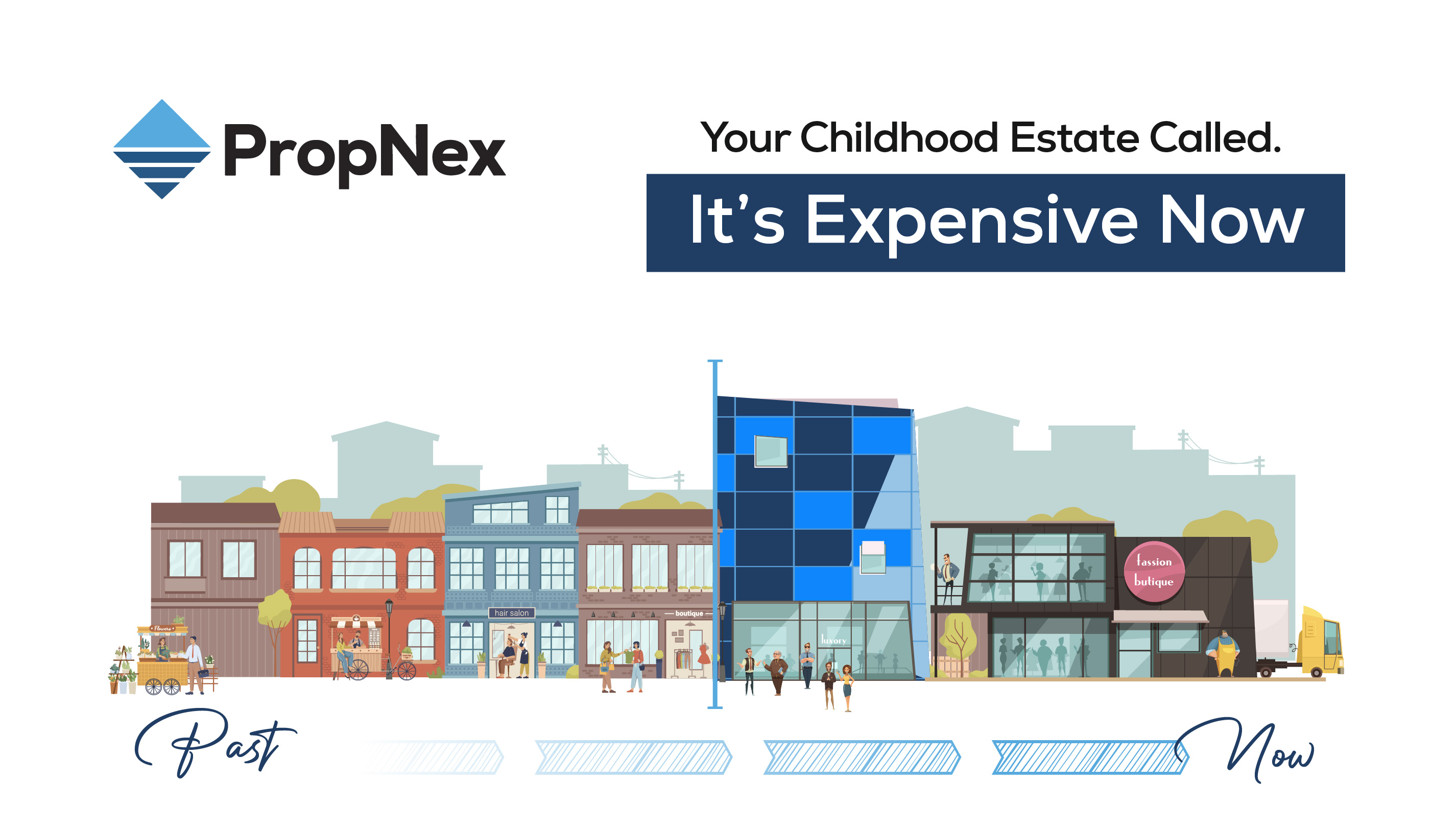What Makes A District A Million-Dollar Magnet?

Once upon a time, million-dollar properties in Singapore were the domain of luxury condos, Good Class Bungalows (GCBs), and prime landed homes. Districts like Orchard, Tanglin, and Bukit Timah reigned supreme, commanding eye-watering price tags that made them the undisputed prestige zones of the city.
But fast forward to today, and the real estate landscape has changed dramatically. Million-dollar price tags are no longer just for private properties - HDB flats have joined the club, and new estates are emerging as serious contenders.
Just a decade ago, it was unthinkable for a public housing unit to cross the million-dollar threshold. Pinnacle@Duxton made history as one of the first to do so, but now, the phenomenon is no longer a rare event. From Queenstown to Kallang and even towns like Yishun and Ang Mo Kio, resale HDB flats have started fetching seven-figure sums, rewriting the rules of Singapore's property market.
So, what makes a district a million-dollar magnet? Why do some locations continue to command sky-high values, while others are quickly catching up? In this article, we'll explore:
Let's dive in!
For decades, Singapore's real estate hierarchy has been clear - if you wanted a million-dollar home, you looked at Districts 9, 10, and 11, or perhaps the ultra-exclusive bungalows of Sentosa Cove. These areas have long been the gold standard of luxury real estate, commanding some of the highest property prices in the country.
But what exactly makes them so valuable? And why do these districts continue to be highly sought after, even as new million-dollar areas emerge?
The legacy of prestige: Districts 9, 10, 11
Often referred to as the Core Central Region (CCR), these districts encompass some of Singapore's most iconic neighbourhoods:
District 9 - Orchard, River Valley: The heart of luxury living, home to premium shopping malls, high-end condominiums, and top-tier international schools.
District 10 - Tanglin, Holland, Bukit Timah: An enclave of affluent families, featuring GCBs and exclusive private estates.
District 11 - Newton, Novena: Known for its proximity to top schools and medical hubs, attracting both investors and homebuyers looking for a mix of prestige and convenience.
Key factors driving their value
1. Proximity to the CBD and Orchard Road
Being just minutes away from the CBD is a major advantage, especially for high-net-worth individuals, expatriates, and business owners who value connectivity. Orchard Road, Singapore's premier shopping belt, further adds to the area's desirability.
2. Exclusive landed enclaves and luxury condos
The landed homes in Bukit Timah, Tanglin, and Holland are among the most coveted in the country. These areas are home to GCBs - the most prestigious and expensive form of housing in Singapore. Meanwhile, condos like Leedon Residence, The Marq on Paterson Hill, and Nouvel 18 redefine luxury with sprawling units, high-end finishes, and state-of-the-art facilities.
3. Strong foreign buyer interest
Historically, these districts have been favourite investment hotspots for wealthy foreigners. In fact, foreign investment plays a huge role in Singapore's property landscape. Before the ABSD increases, overseas investors snapped up properties in these areas, drawn by their prime location, stable returns, and global appeal of Singapore's real estate market.
4. Reputation and status symbol
Owning a home in District 9, 10, or 11 isn't just about location - it's a symbol of success. These districts have long been associated with Singapore's elite, from business tycoons to celebrities, such as Facebook co-founder Eduardo Saverin and healthcare mogul Li Xiting. The prestige factor alone keeps demand high, as homeowners and investors see these areas as trophy assets.
5. Top-tier schools and education hubs
For families, these districts offer access to Singapore's best schools, including Anglo-Chinese School (Barker & Primary), Nanyang Primary School, Raffles Girls' School, Singapore Chinese Girls' School, and Hwa Chong Institution. For many parents, the 1km advantage to these elite institutions is worth paying a premium for, keeping property values consistently high.
Why these districts continue to command million-dollar price tags
Even as new areas emerge, these traditional million-dollar districts remain untouchable in terms of prestige and desirability.
Scarcity of land: There are only so many luxury residences in these districts due to limited space. Thus, keeping demand strong.
Condo capital appreciation: D9 (red), D10 (blue), D11 (orange)
Stable investment value: Over the past two decades, Districts 9, 10, and 11 have shown strong capital appreciation, making them a safe bet for long-term investors.
Landed capital appreciation: D9 (orange), D10 (blue), D11 (red)
Unmatched prestige and lifestyle appeal: These areas offer an unparalleled combination of luxury, location, and exclusivity, which other districts can't easily replicate.
However, while these districts are synonymous with wealth, they are no longer the only places where million-dollar transactions happen. In recent years, new locations - once considered "ordinary" - have joined the ranks of million-dollar districts.
Let's explore these rising stars and what's driving their newfound million-dollar appeal.
For decades, Singapore's million-dollar club was exclusive to traditional luxury districts - prime landed enclaves, high-end condos, and Sentosa Cove's waterfront bungalows. But today, a new wave of districts is breaking into this exclusive tier, challenging long-held assumptions about where high-value properties are located.
From city-fringe locations to newly rejuvenated estates, several districts are experiencing an influx of million-dollar transactions, with buyers willing to fork out premium prices for homes in areas that were once considered "mid-tier" or even "undesirable."
But why? What has changed? And which are the new contenders making their mark in Singapore's real estate scene?
What are the new million-dollar districts?
These up-and-coming districts can be broadly categorised into three groups:
1. City-fringe & Suburban homes: The new million-dollar contenders
RCR - The new prime locations: Located just outside the city centre, RCR districts have become highly sought after, offering a balance of convenience, lifestyle, and connectivity. With new integrated developments, improved transport links, and increasing demand for homes near the CBD, these areas are reshaping what it means to live in a prime location.
OCR - Suburban growth and rising demand: Beyond the city-fringe, select OCR locations are also making waves in the property market. Once seen as purely residential heartlands, many suburban estates now feature thriving commercial hubs, lifestyle malls, and enhanced transport networks. With strong demand from upgraders and first-time private property buyers, million-dollar price tags are no longer exclusive to central locations.
As Singapore's real estate landscape evolves, both RCR and OCR areas are proving that luxury and value can exist beyond the traditional prime districts.
2. Mature & well-connected HDB estates with premium pricing
Million-dollar HDBs were once a rarity, but today, they are no longer confined to a few select developments. While early record-breaking transactions in central locations like Queenstown and Bishan paved the wave, several other towns have since joined the ranks. These estates command premium prices due to their centrality, strong transport links, and sought-after amenities.
Bishan and Toa Payoh: These estates combine centrality, good schools, and MRT accessibility, making them prime candidates for record-breaking transactions.
Kallang/Whampoa and Queenstown: Some of Singapore's most expensive resale HDB flats are found here thanks to their proximity to the CBD and limited supply of large flats.
Serangoon and Marine Parade: With highly ranked schools and strong transport links, resale demand remains robust, pushing more HDBs past the million-dollar mark.
What's driving their million-dollar status?
While each district has its unique appeal, several key factors have contributed to their rise as million-dollar magnets:
1. Major government-led rejuvenation
Many of these districts have benefited from large-scale urban transformation plans, which significantly boost property values. For example, once a quiet underdeveloped area, Bidadari is now an eco-friendly town with integrated malls, MRT stations, and lifestyle hubs. Another example is Paya Lebar. The former industrial hub has been transformed into a commercial and cultural hotspot with projects like Paya Lebar Quarter (PLQ).
Impact: Government-backed infrastructure projects create confidence among buyers, leading to increased property demand and price appreciation.
2. Improved transport and connectivity
The expansion of MRT lines and new expressways has turned previously "inconvenient" areas into prime locations. For example, the opening of the Lentor MRT Station has significantly boosted property demand in Lentor. Another example is Redhill and Alexandra. Located just 1-2 MRT stops from the CBD, these areas provide affordable luxury alternatives to District 9.
Impact: As connectivity improves, once-overlooked estates see higher demand from both homebuyers and investors, driving prices up.
3. The lifestyle and liveability factor
New million-dollar districts aren't just about convenience - they also offer an upgraded quality of life. For example, Dairy Farm. Buyers now prioritise greenery, tranquility, and wellness-focused developments over pure centrality. Another example is Marine Parade. Access to East Coast Park, top schools, and upcoming MRT lines makes it an attractive long-term investment.
Impact: People are willing to pay more for better quality living, even if it means moving away from traditional prime districts.
4. Shift in buyer preferences and demographics
Young professionals and upgraders are no longer fixated on Orchard or Bukit Timah. Many prefer city-fringe locations with new amenities rather than ageing properties in prime districts. Larger HDB flats (executive maisonettes and jumbo flats) in well-located estates are in high demand among growing families.
Impact: Younger generations are redefining what a prime location is, shifting demand away from legacy prime districts.
5. Increasing land and home prices across Singapore
The general rise in land costs and new launch prices has naturally pushed more districts into the million-dollar range. New private projects are launched at higher PSF prices, increasing the resale value of surrounding properties. On the other hand, the demand for move-in-ready homes has also pushed up resale prices across the board.
Impact: Buyers priced out of traditional districts are driving demand in previously overlooked areas, pushing their values higher.
For decades, HDB flats were viewed as affordable housing, a practical option for homebuyers who couldn't afford private properties. However, in recent years, HDB flats crossing the million-dollar mark have become more common, with transactions recorded in various neighbourhoods across Singapore.
While private condos and landed homes have always commanded seven-figure price tags, HDB flats were traditionally seen as a category apart. That perception has now changed, with record-breaking HDB resale transactions occurring month after month. What's fueling this shift? And will this trend continue?
From affordable housing to premium resale
HDB resale flats were once considered a budget-friendly alternative to private housing, but rising demand and limited supply have pushed resale prices to unprecedented levels. Certain HDB flats now command private condo-like prices, particularly in areas with strong location advantages.
Today, some buyers are willing to pay over a million dollars for an HDB flat, especially if it offers spacious layouts, prime accessibility, and lifestyle conveniences. This trend is redefining the traditional price hierarchy of Singapore's housing market.
Which locations are seeing million-dollar transactions?
Million-dollar HDB transactions are no longer confined to a handful of estates but are now occurring across a wider range of locations. Areas with strong accessibility, established amenities, and spacious flat types have continued to dominate these high-value transactions. Towns such as Kallang/Whampoa, Toa Payoh, Bukit Merah, and Queenstown have recorded some of the highest numbers of million-dollar transactions, largely due to their centrality and connectivity. Buyers are drawn to these estates for their proximity to the city, MRT stations, and well-developed town centers, all of which contribute to sustained demand and rising prices.
While central locations continue to command the highest number of transactions, other areas have also entered the million-dollar club, particularly those offering larger flat types such as executive apartments and five-room flats. Bishan, Clementi, and Ang Mo Kio, for example, have recorded a significant number of such transactions, with a notable portion involving executive flats, which are no longer built in newer developments. The scarcity of these spacious units has made them highly sought after by homebuyers looking for long-term residences that can accommodate multi-generational living.
In addition to traditional high-demand estates, million-dollar HDB transactions have also been observed in areas not previously associated with premium pricing. Locations such as Yishun, Pasir Ris, and Sengkang, which were once seen as more affordable options, have recorded occasional high-value sales. While these cases remain relatively rare compared to central districts, they highlight how demand for unique and well-located flats extends beyond city-fringe estates. In many instances, high-floor units with unblocked views, well-renovated interiors, or proximity to MRT stations have been key factors in driving up resale prices.
As Singapore's real estate market evolves, the geographical spread of million-dollar HDB transactions will likely continue to expand. While central and city-fringe estates will always remain strongholds for high-value sales, the growing demand for larger living spaces, coupled with improving infrastructure in outer districts, suggests that million-dollar transactions may become increasingly common in a wider range of locations.
The growing number of million-dollar HDB transactions has sparked discussions about whether this trend will persist or eventually stabilise. While demand for well-located and spacious resale flats remains strong, external factors such as government policies, housing supply, and shifting buyer preferences will play a crucial role in determining how the market evolves.
Source: The Straits Times
One of the key factors that could influence this trend is government intervention. Over the years, various cooling measures have been introduced to regulate housing affordability and prevent excessive price escalation. If resale flat prices continue to climb, the government may introduce further measures to moderate demand, such as additional restrictions on eligibility for purchasing high-value resale flats or new financing regulations. These policies could slow down the rate of price growth, ensuring that public housing remains accessible to a larger segment of the population.
Source: Channel News Asia
The availability of new flats will also have an impact on the resale market. With the government ramping up the supply of Build-To-Order (BTO) flats in various towns, more homebuyers may opt for new flats instead of resale units. For example, the selling price of Woodland's latest BTO project, Woodland North Verge, is priced at $140,000 - $486,000 (excluding grants) and $20,000 - $431,000 (including grants). If we were to take a look at the resale prices surrounding the project - $368,000 - $790,000 - it is clear that BTO prices are significantly more attractive and affordable. As more BTO projects are launched and completed, the pressure on the resale market could ease, particularly for flats in locations where resale demand is not as intense. This may lead to a more gradual price appreciation rather than the sharp increases seen in recent years.
Suggested Reads
Upcoming Events
View more














